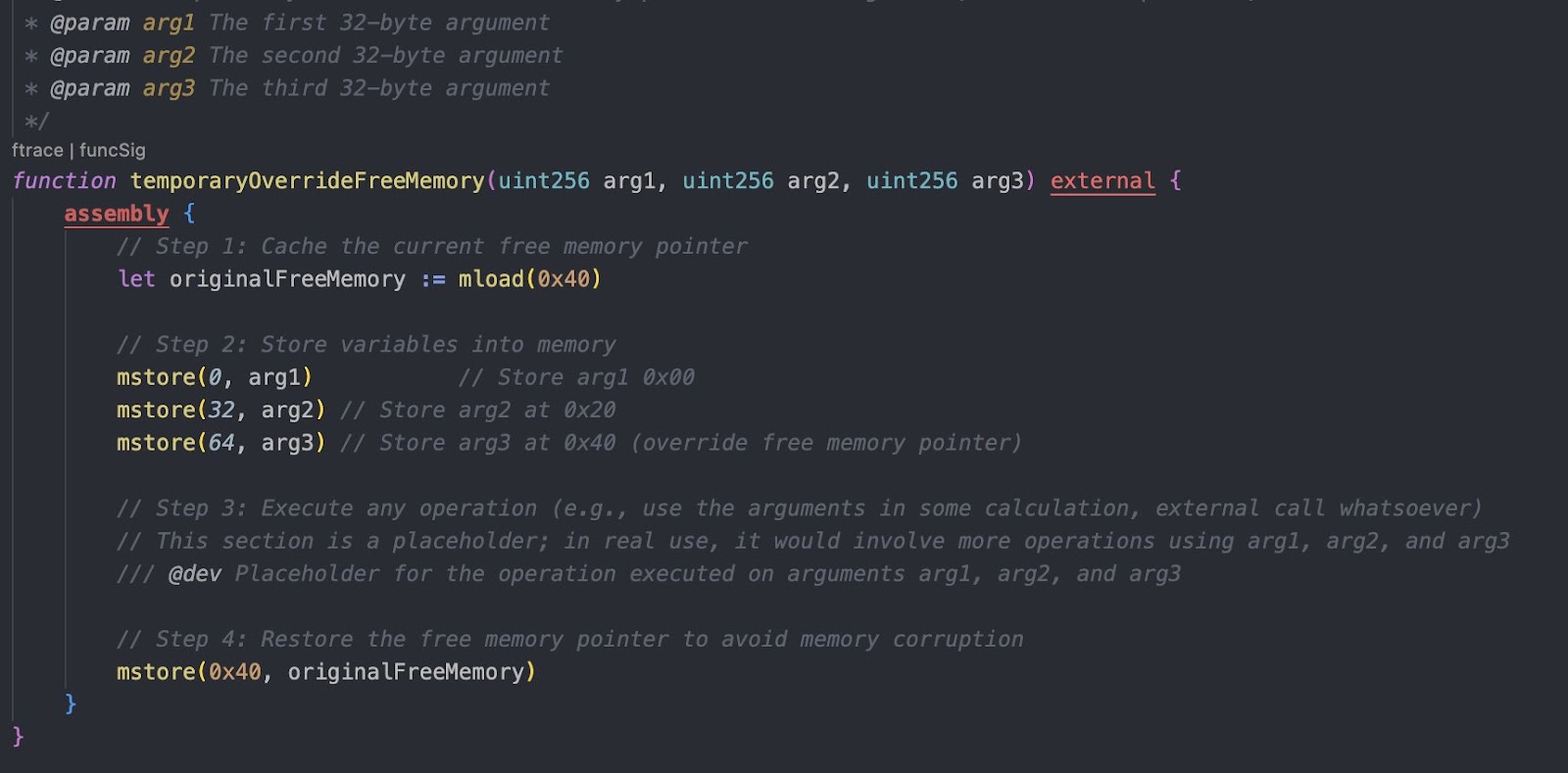In Solidity, efficient memory management is key to building optimized, reliable smart contracts. One of the fundamental aspects of memory management in the Ethereum Virtual Machine (EVM) is the "free memory pointer." This pointer plays a critical role in low-level memory operations, especially when using inline assembly, as it helps Solidity manage dynamic storage effectively. Let's delve into the concept of the free memory pointer and its importance in Solidity programming.
What is the Free Memory Pointer?
The free memory pointer in Solidity is a memory location indicator, directing the EVM to where the next free slot in memory begins. This pointer is stored at memory address `0x40` and ensures that memory allocation happens efficiently, particularly when working with dynamic data like arrays and mappings.
Memory in Solidity is contiguous and linear, meaning each new piece of allocated memory starts where the previous allocation ends. The free memory pointer tracks these allocations and helps optimize memory usage.
Key Roles of the Free Memory Pointer
1. Efficient Memory Usage: The free memory pointer indicates where unallocated memory begins, enabling Solidity to allocate memory in a streamlined way without overwriting existing data.
2. Automatic Adjustments in High-Level Operations: Solidity automatically adjusts the free memory pointer during standard high-level operations, such as creating new variables.
3. Manual Management in Inline Assembly: When using inline assembly for low-level control, developers need to manage the free memory pointer manually. Failing to restore it can lead to memory corruption, impacting the contract’s functionality.
Managing the Free Memory Pointer in Inline Assembly
Inline assembly allows developers to access the EVM directly for fine-grained control. However, improper management of the free memory pointer here can result in unintended overwrites. Let’s walk through an example to illustrate how to manage the free memory pointer safely.
Example: Temporary Override of the Free Memory Pointer
In this example, we perform the following steps:
1. Cache the Free Memory Pointer: Save the current pointer value so we can restore it later.
2. Override the Pointer Temporarily: Use inline assembly to store three 32-byte values temporarily.
3. Execute the Desired Operation: Perform operations within the custom memory range.
4. Restore the Pointer: Reset the pointer to its original value to prevent corruption in subsequent operations.

Why Restoring the Free Memory Pointer is Crucial
Failing to restore the free memory pointer after a manual override can lead to severe issues. For instance, subsequent operations might attempt to allocate memory at incorrect locations, causing data overlap and memory corruption. This simple step of restoring the pointer ensures that the EVM’s memory allocation remains consistent, minimizing the risk of unexpected errors.
Conclusion
Understanding and managing the free memory pointer in Solidity is essential for developers looking to optimize smart contracts. Whether working with high-level Solidity or using inline assembly for low-level memory control, a solid grasp of memory pointers will aid in creating efficient, secure, and reliable contracts.
The free memory pointer is just one part of Solidity's memory management, but mastering it provides developers with more control over contract behavior, especially for complex applications.
FAQs
1. What is the purpose of the free memory pointer in Solidity?
The free memory pointer is used to track where unallocated memory begins in Solidity's linear memory structure. It helps manage memory efficiently, especially when working with dynamic data, and is stored at the 0x40 address.
2. Why is it important to restore the free memory pointer after modifying it in inline assembly?
Failing to restore the free memory pointer after modification can lead to memory corruption, causing other functions or operations to write to the wrong memory location, which may result in errors or unpredictable behavior.
3. When would you need to manage the free memory pointer manually? Manual management is necessary when working with low-level assembly in Solidity. This is especially relevant if you're temporarily overriding the free memory pointer and need to allocate memory carefully to avoid overwriting other data.
4. How does Solidity automatically handle the free memory pointer?
In high-level Solidity operations, the compiler automatically adjusts the free memory pointer for dynamic allocations, ensuring efficient memory usage without needing manual intervention.
5. Can improper handling of the free memory pointer lead to security vulnerabilities?
Yes, improper management can lead to memory corruption, which could be exploited by malicious actors in certain scenarios. Proper handling is essential for maintaining secure, reliable smart contracts, especially in low-level memory operations.










